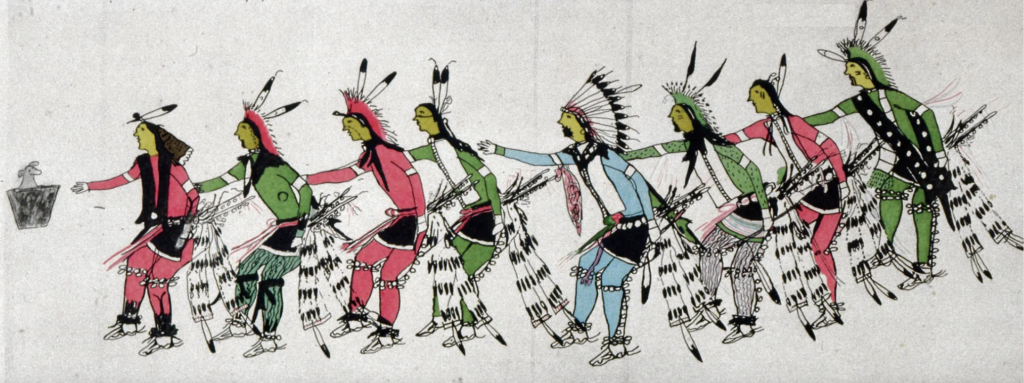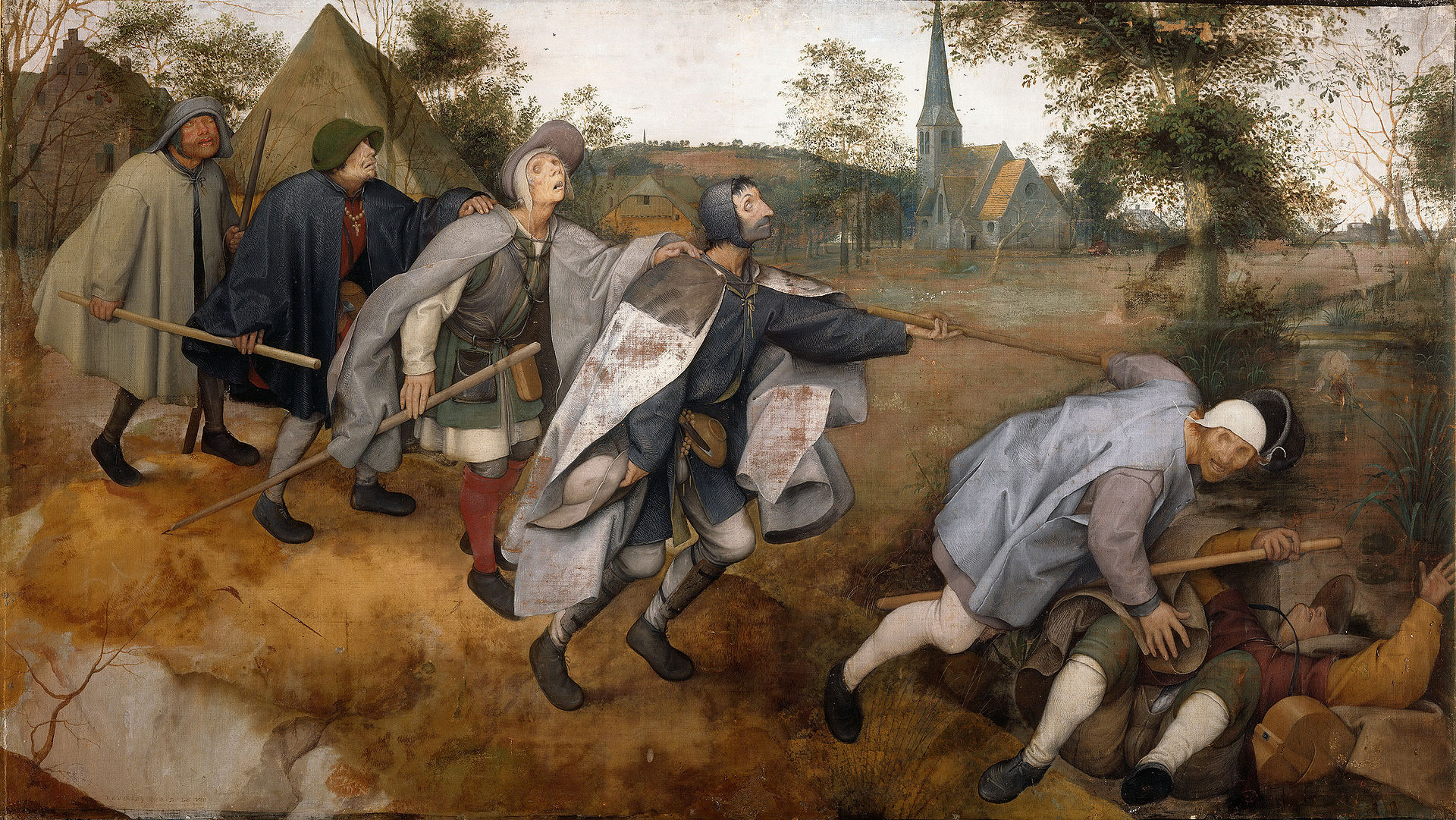Chapter 3 | THE POLONAISE
The polonaise is a very cheerful dance ritual in which you walk behind each other in a string, with your hands on the shoulders of the person in front of you. The polonaise is often danced during carnival. A special example of such a dance is a drawing by Amos Bad Heart Bull, an Oglala Lakota Indian who lived from 1868 to 1913. With these Indians the dance had a ceremonial/religious meaning; perhaps they believed the dance brought good weather, peace and enough food.

EXTRA 1: draw a polonaise. You can make up your own fantasy figures but also choose this model figure as a basis.

In 1568, Pieter Brueghel the Elder painted six men walking one after the other while holding each other by the shoulder, just like in a polonaise. In Brueghel’s case, however, it is not a polonaise, but blind men from a Bible story who try to find their way with great difficulty. Each blind man is led by the blind man in front of him, but unfortunately that does not work very well. The two in front have already (almost) fallen into a ditch due to the pushing and pulling. Brueghel shows the uncertainty of the men very well. The meaning is that you should not blindly follow leaders, because then things will end badly. The painting hangs in the Capodimonte Museum, a large palace in Naples, Italy.

Recently I came across a variation on Brueghel’s painting in a beautiful illustration for the NRC newspaper by the Dutch illustrator Leonieke Fontijn. These remarkable figures have enormous legs and hands and very small heads.

EXTRA 2: draw a polonaise in which the figures from Leonieke Fontijn push or pull each other too hard. The last in line is still walking upright, but the front one has already (almost) fallen over, due to the pushing and pulling.